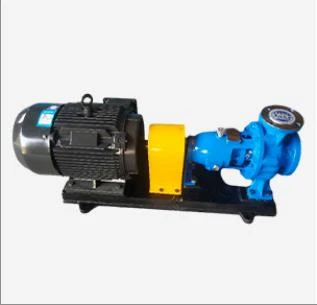irish
- Afrikaans
- Albanian
- Amharic
- Arabic
- Armenian
- Azerbaijani
- Basque
- Belarusian
- Bengali
- Bosnian
- Bulgarian
- Catalan
- Cebuano
- Corsican
- Croatian
- Czech
- Danish
- Dutch
- English
- Esperanto
- Estonian
- Finnish
- French
- Frisian
- Galician
- Georgian
- German
- Greek
- Gujarati
- Haitian Creole
- hausa
- hawaiian
- Hebrew
- Hindi
- Miao
- Hungarian
- Icelandic
- igbo
- Indonesian
- irish
- Italian
- Japanese
- Javanese
- Kannada
- kazakh
- Khmer
- Rwandese
- Korean
- Kurdish
- Kyrgyz
- Lao
- Latin
- Latvian
- Lithuanian
- Luxembourgish
- Macedonian
- Malgashi
- Malay
- Malayalam
- Maltese
- Maori
- Marathi
- Mongolian
- Myanmar
- Nepali
- Norwegian
- Norwegian
- Occitan
- Pashto
- Persian
- Polish
- Portuguese
- Punjabi
- Romanian
- Russian
- Samoan
- Scottish Gaelic
- Serbian
- Sesotho
- Shona
- Sindhi
- Sinhala
- Slovak
- Slovenian
- Somali
- Spanish
- Sundanese
- Swahili
- Swedish
- Tagalog
- Tajik
- Tamil
- Tatar
- Telugu
- Thai
- Turkish
- Turkmen
- Ukrainian
- Urdu
- Uighur
- Uzbek
- Vietnamese
- Welsh
- Bantu
- Yiddish
- Yoruba
- Zulu
Telephone: +86 13120555503
Email: frank@cypump.com
Oct . 05, 2024 10:45 Back to list
how does a double suction pump work
Understanding Double Suction Pumps How They Work
Double suction pumps are pivotal components in various industrial applications, designed to efficiently move large volumes of liquids while minimizing energy consumption and wear. These pumps are particularly popular in water treatment, irrigation, and other fluid transport systems due to their unique design and operational advantages. This article delves into the working mechanism of double suction pumps, explaining their functionality, benefits, and typical uses.
The Design of Double Suction Pumps
At the heart of a double suction pump is its distinctive configuration, which features two inlets (or suction ports) allowing fluid to enter from both sides of the impeller. This design contrasts with single-suction pumps that draw fluid from only one side. The impeller sits centrally between these inlets, rotating to generate centrifugal force, which propels the fluid outward.
The dual-inlet design offers a more balanced load distribution on the impeller, reducing axial thrust—a condition where a significant force is exerted along the pump shaft, leading to premature wear and potential failure. By mitigative this issue, double suction pumps can achieve higher efficiency and longevity.
How Does the Pump Work?
The operation of a double suction pump begins when the motor drives the impeller to rotate. As the impeller spins, it creates a low-pressure zone at the center, allowing the ambient pressure to force liquid into both suction inlets simultaneously. This dual approach enhances the flow rate, enabling the pump to handle a significant volume of liquid without losing efficiency.
Steps of Operation
1. Entry of Fluid Liquid enters through the two suction ports at the same time, creating a balanced inflow. 2. Centrifugal Action As the impeller rotates, it imparts kinetic energy to the fluid, pushing it outward towards the volute casing surrounding the impeller.
3. Pressure Increase In the volute casing, the flow area expands, causing the velocity of the fluid to decrease. According to Bernoulli's principle, this reduction in velocity results in an increase in pressure, allowing the fluid to be discharged effectively.
4. Discharge Once the pressure is sufficient, the liquid exits through the discharge outlet, ready for transport through pipelines or other systems.
Benefits of Double Suction Pumps
Double suction pumps offer several advantages over their single-suction counterparts
how does a double suction pump work

- Higher Efficiency The dual-inlet design allows for a greater flow rate while minimizing energy expenditure, resulting in operational cost savings
.- Reduced Axial Thrust Balancing fluid entry helps to mitigate axial forces, which reduces wear and prolongs the pump's lifespan.
- Versatile Applications These pumps are versatile, capable of handling various fluids, including water, sewage, and other industrial liquids.
- Compact Size With the ability to handle higher volumes, double suction pumps often occupy a smaller footprint than multiple single-suction pumps handling the same capacity.
Typical Applications
Double suction pumps are commonly used in scenarios that require efficient handling of large volumes of liquid. Some typical applications include
- Water Supply and Distribution Serving municipal water systems to ensure reliable delivery of water to communities.
- Irrigation Systems Facilitating efficient water distribution in agricultural settings.
- Fire Protection Systems Providing rapid water supply in firefighting operations.
- Industrial Processes Supporting various manufacturing and processing systems requiring consistent fluid transport.
Conclusion
In summary, double suction pumps are crucial in numerous applications, showcasing their efficiency and durability. Their unique design and operational advantages make them a preferred choice for industries that require the reliable movement of large volumes of liquid. Understanding how these pumps work helps in selecting the right equipment for specific fluid transport needs, thereby optimizing performance and ensuring operational efficiency.
-
pipeline pump - Chi Yuan Pumps Co., LTD.|High Efficiency&Low Noise
NewsJul.31,2025
-
ISG Series Vertical Pipeline Pump - Chi Yuan Pumps Co., LTD.|High Efficiency, Energy Saving, Low Noise
NewsJul.30,2025
-
ISG Series Vertical Pipeline Pump- Chi Yuan Pumps|High Efficiency&Low Noise
NewsJul.30,2025
-
ISG Series Vertical Pipeline Pump-Chi Yuan Pumps Co., LTD.|High Efficiency&Energy Conservation
NewsJul.30,2025
-
ISG Series Vertical Pipeline Pump - Chi Yuan Pumps Co., LTD.|Advanced Hydraulic Design&Energy-Efficient Solutions
NewsJul.30,2025
-
ISG Series Vertical Pipeline Pump - Chi Yuan Pumps Co., LTD.
NewsJul.30,2025










